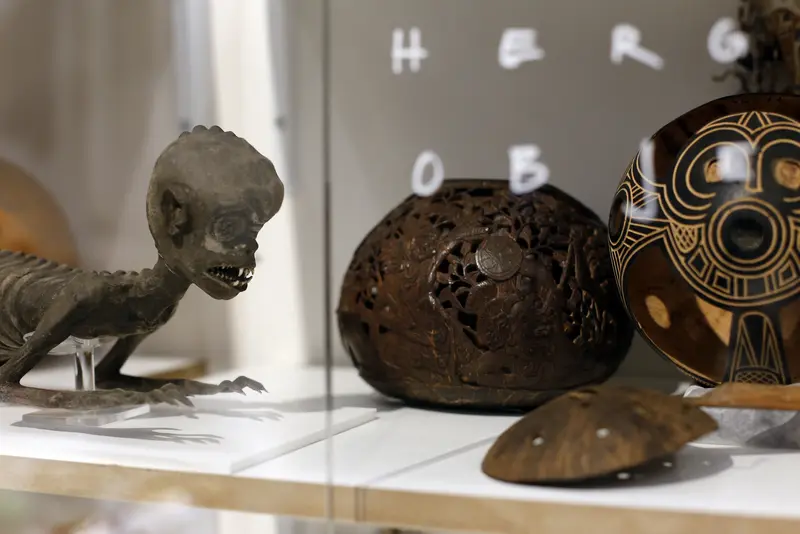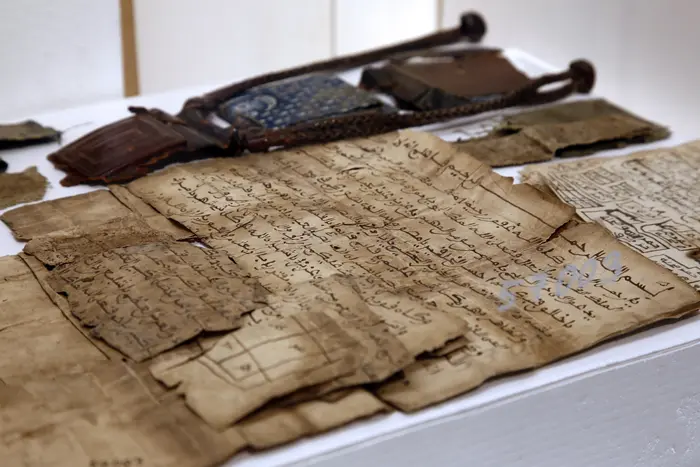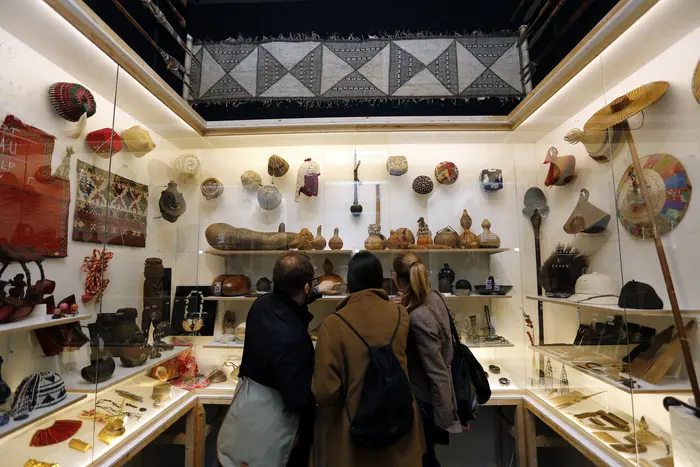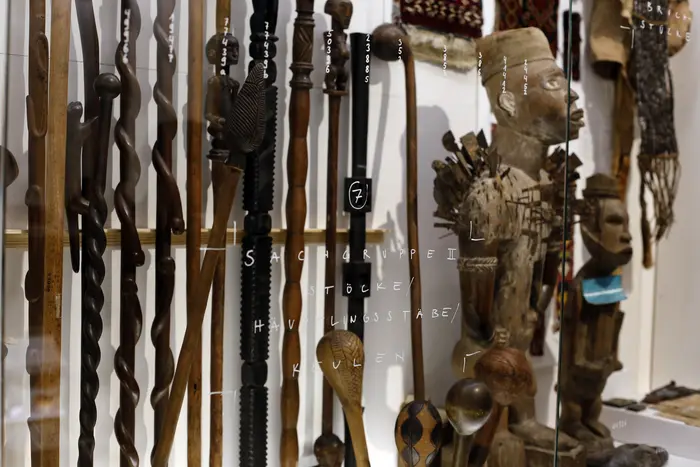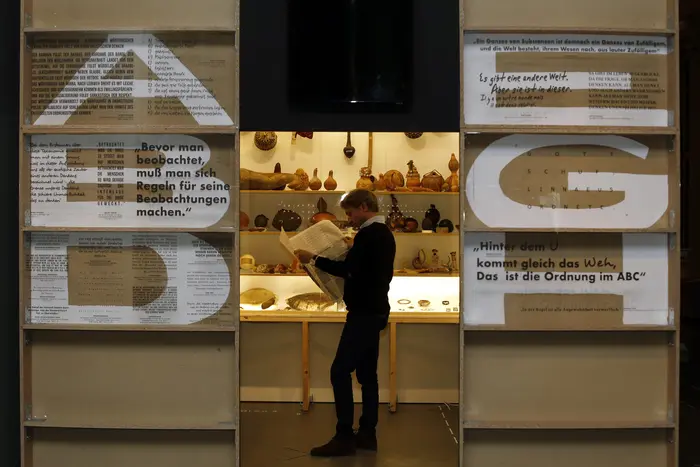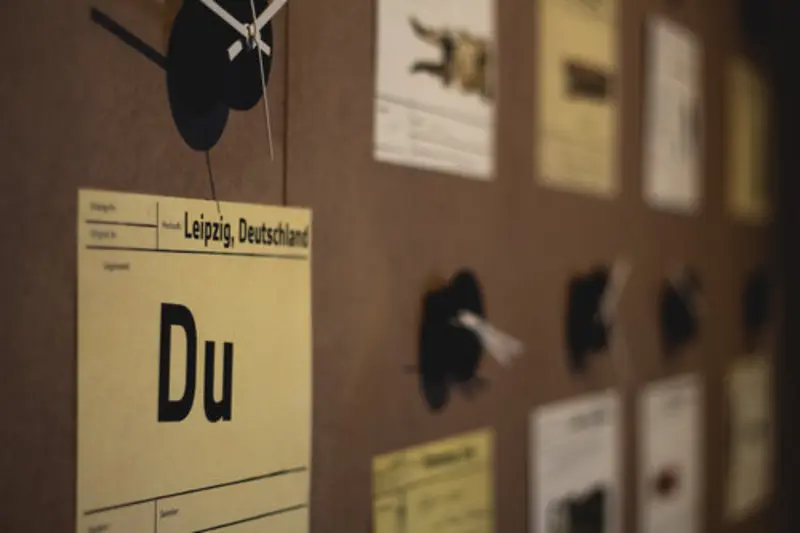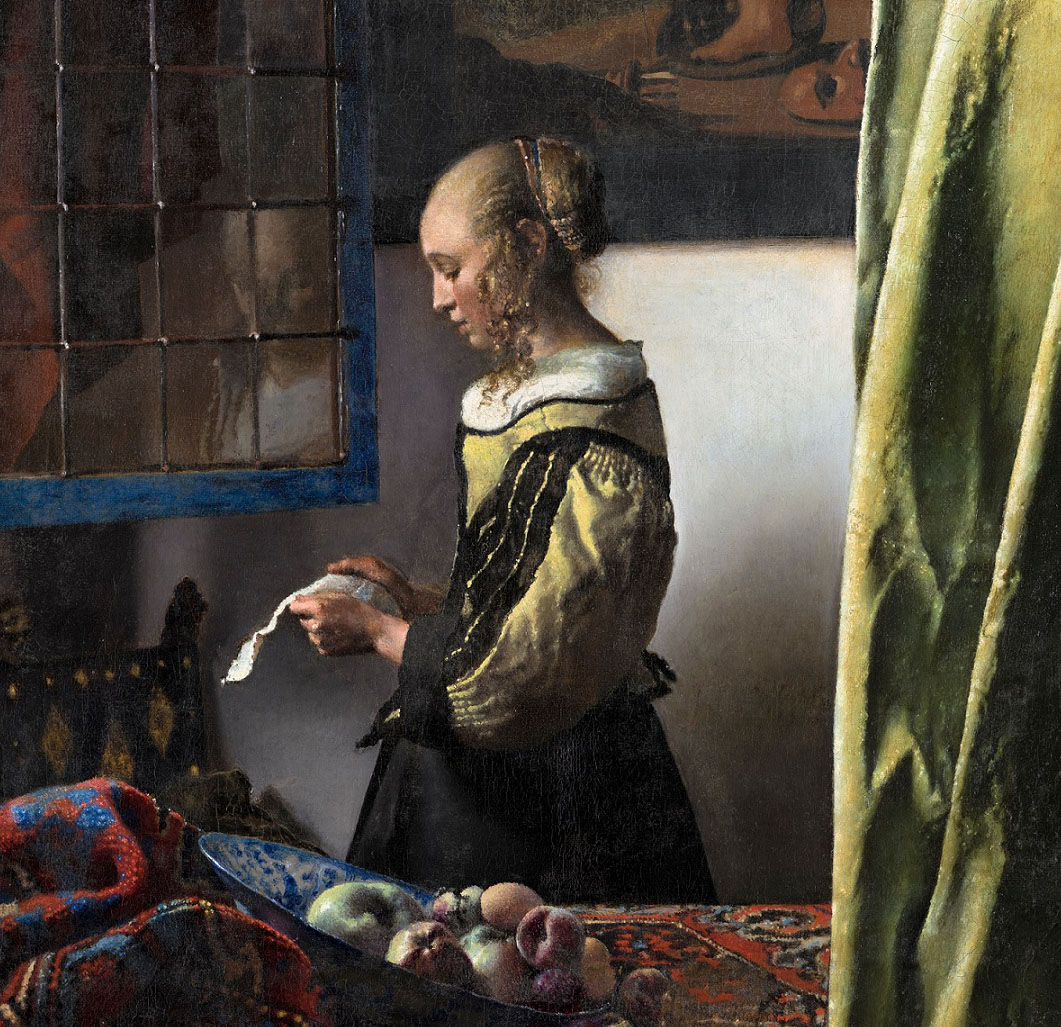[Translate to English:] Zu wem hast du gehört?
More than 600 objects of the collection from all corners of the world are presented in a small studio. What does a fishing spear, a crown of feathers, a lady's shoe, a rattle, a necklace of manillas, a piece of gold jewellery, a paint can, a figure of a bird, an ostrich egg, a necklace, a pair of glasses, a talisman or a pith helmet tell us about our mania for collection and our need for order? According to which criteria are objects classified and can there ever be an end to any order?
Discover the seemingly smallest objects of the museum, a collection of combs and scissors, sticks, red and blue objects, light and heavy, as well as fragments.
